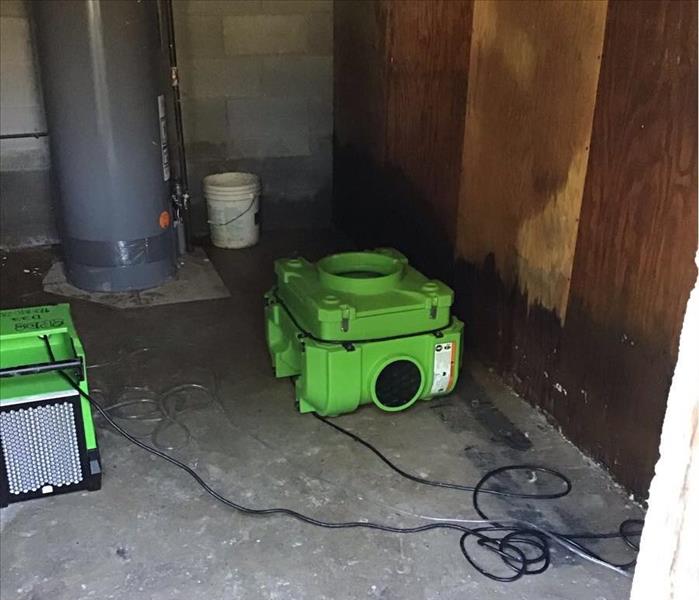Advanced Drying Techniques for Vernon Homes
11/29/2021 (Permalink)
 Air scrubbers and dehumidifiers positioned by our SERVPRO techs can mitigate water damage in Vernon homes
Air scrubbers and dehumidifiers positioned by our SERVPRO techs can mitigate water damage in Vernon homes
Regulating specific drying principles and natural processes speeds up thorough drying in Vernon properties.
Drying is a difficult phase of water restoration that employs several devices like our high-velocity air movers and desiccant or low-grain refrigerant dehumidifiers. When considerations get made to other drying principles and conditions, this portion of the overall recovery process can happen faster and with fewer obstacles.
A Blend of Variables for Efficient Drying
Properly addressing water damage in Vernon homes requires a balance of specific drying principles. Certain variables play a significant role in how fast or simple evaporative drying becomes. For example, warmer temperatures can help promote the faster molecular movement of chemical and physical processes and ultimately remove surface water more quickly.
Natural Drying Processes in the House
Understanding the natural drying processes can aid water restoration professionals in choosing the best approach to prevent greater loss and promote faster evaporation. Much of these principles focus on the property is creating an equilibrium from contrasting conditions in one area or another. Some of these processes include:
- Wet goes to dry
- High pressure goes to low pressure
- Warm goes to cold
Moisture Monitoring for Successful Water Removal
Tracking the movement of moisture and water throughout the house makes for more efficient and thorough drying. Without an active knowledge of where water is and the damage it has done, moisture pockets can get overlooked and ultimately lead to threats like microbial growth or content deterioration.
The more that customers understand what is needed after a water damage incident in their home, the more that people entrust this work to the skilled hands of our SERVPRO of Greater Sussex County team. Give us a call today at (973) 383-2024.





 24/7 Emergency Service
24/7 Emergency Service